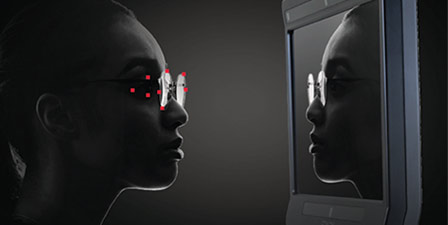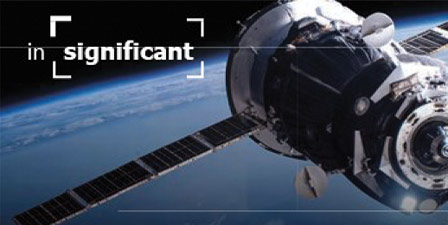Attendees visiting Vision Expo West may notice a few striking trends as they tour the exhibit floor. This year, the customer is once again the primary focus, with technology and trends designed to put the needs of the eyecare provider and consumer first.
On the manufacturing side, we expect to see artificial intelligence (AI) and enhanced automation continue to be the main drivers of innovation as companies look to elevate the vision care experience to a new level. The L&T Expo Scouting Report spotlights the latest lens and technology products to look for at the show.
—Sarah McGoldrick
LENSES

Light sensitivity is one of the biggest challenges in eyecare. Younger Optics now offers Camber Transitions Gen S lenses available in gray and brown in six lens materials including Hard Resin 1.50, Poly, Trilogy, High Index 1.60, High Index 1.67 and High Index 1.74. Camber lens blanks have a unique variable base curve that allows expanded reading zones and improved peripheral vision. When combined with digital designs by IOT, Camber lenses provide presbyopes excellent vision correction and a user-preferred near vision experience. This builds on Younger’s existing portfolio of Transitions Gen S lenses, now available in eight colors.
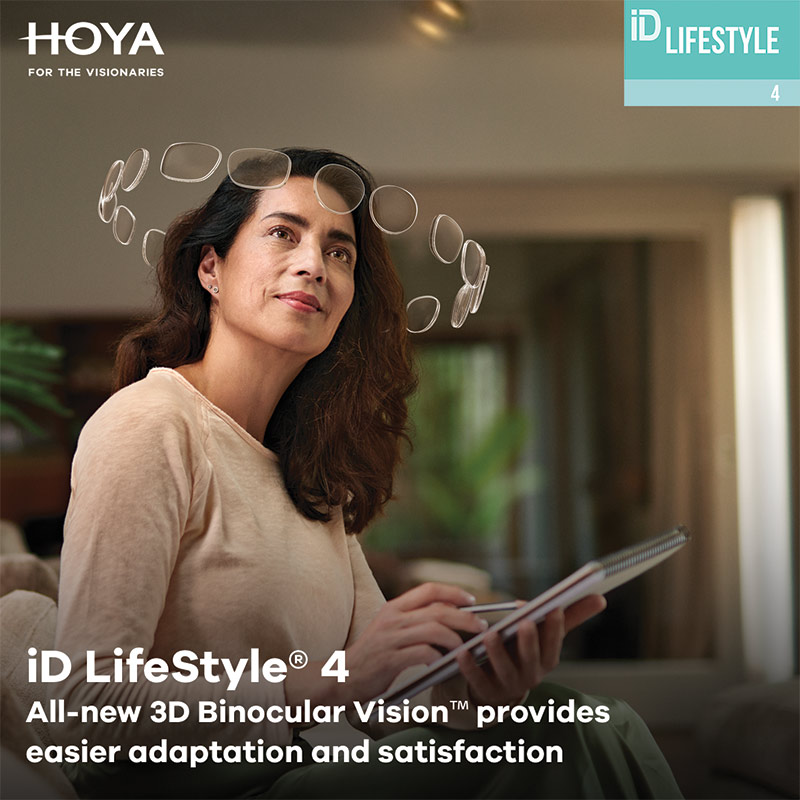
Adaptation is often a barrier to entry for people needing progressive lenses. Hoya Vision Care has developed new technology to make adaptation easier. The iD Lifestyle 4 Progressive Lens with 3D Binocular Vision Technology includes its patented 3D Binocular Vision technology that combines three binocular technologies with an integrated double-surface design. As a result, eyecare professionals can prescribe with confidence by providing faster adaptation, resulting in greater patient comfort and increased satisfaction.
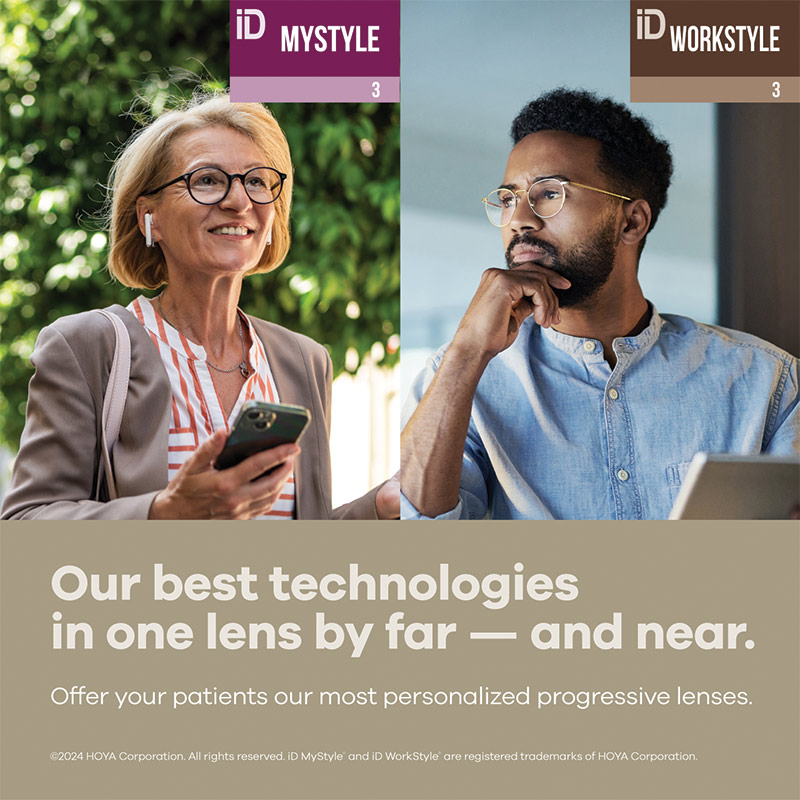
For those looking for workplace solutions, Hoya’s iD MyStyle 3 and iD WorkStyle 3 to Share offer the addition of AdaptEase Technology, which leads to faster adaption and clearer vision by reducing peripheral astigmatic distortion. This design features 3D Binocular Vision technology. It significantly reduces peripheral distortion, creating a more comfortable and stable visual experience. Combining AdaptEase Technology with 3D Binocular Vision and binocular technologies uniquely benefits those with different prescriptions in each eye.
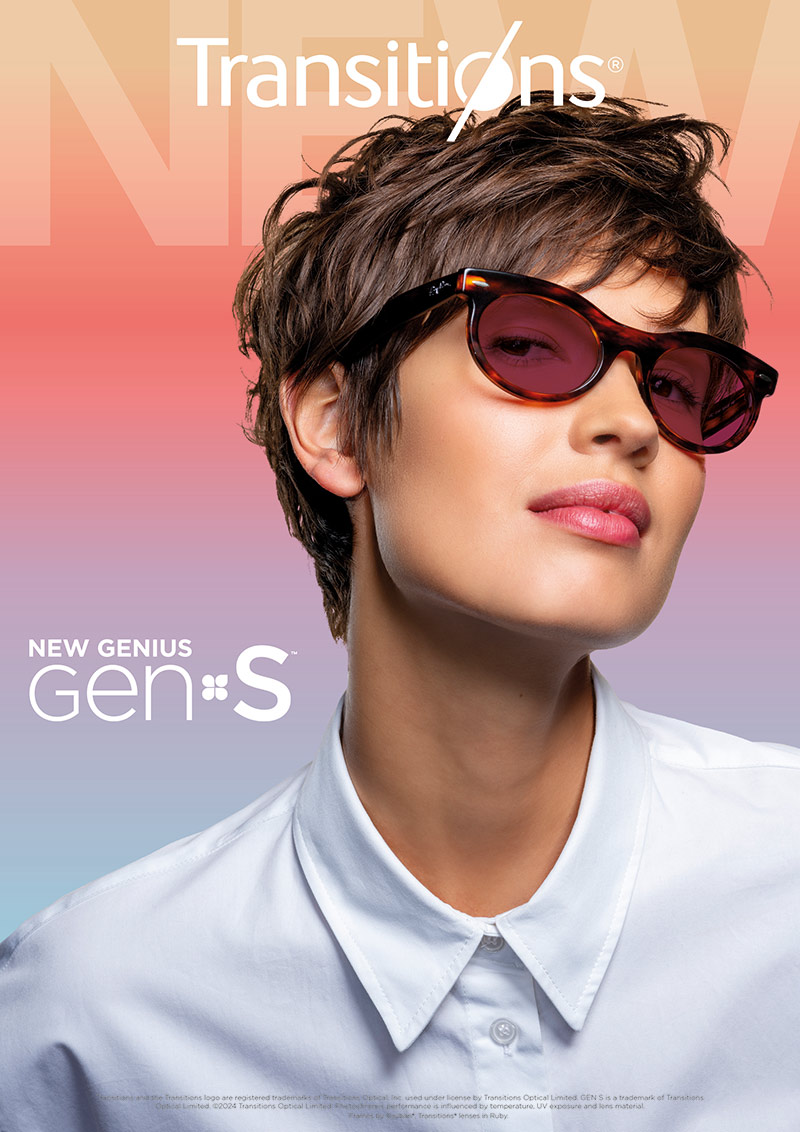
Transitions Gen S lenses from EssilorLuxottica continues to push the boundaries of traditional prescription lenses. According to EssilorLuxottica, Gen S is the fastest dark lens in the clear to dark photochromic category, activating in seconds outdoors and fully clear indoors, providing an improved long-lasting photochromic performance. Available in eight exclusive colors including Transitions Gen S ruby, every lens color stays true to tone across activation, delivering thousands of stunning mid-tints and endless pairing possibilities. Transitions Gen S provides light protection, blocking 100 percent UVA and UVB rays and filtering up to 32 percent blue-violet light indoors and up to 85 percent outdoors.
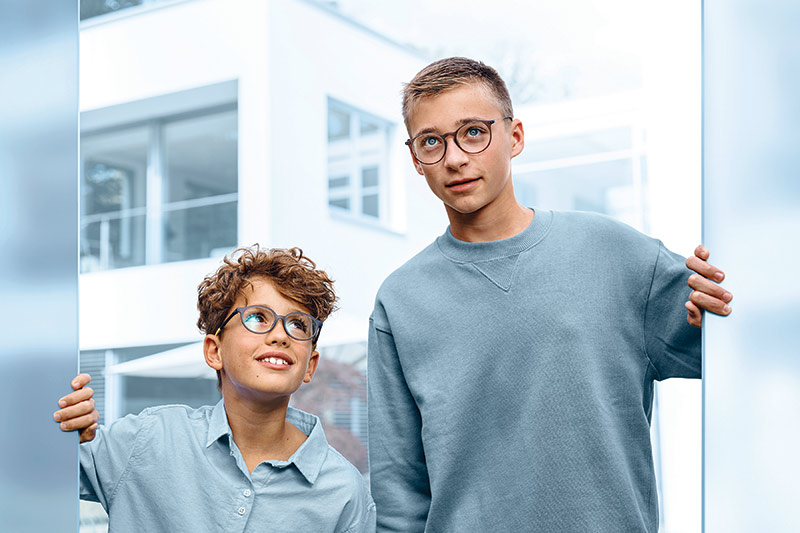
Wearing glasses can be challenging for children. Zeiss has specifically designed the Zeiss SmartLife Young lenses to ensure those between 6 and 19 years of age enjoy optimized vision. The lenses incorporate technologies to adapt to the unique needs of young eyes including up to 60 percent wider fields of clear viewing for handheld digital devices compared to conventional Zeiss Single Vision lenses. These lenses also feature attributes such as vision for all distances including near, intermediate and far, minimizing eye strain and fatigue, and are fine tuned for the unique behaviors and changing facial features of younger patients.
TECHNOLOGY
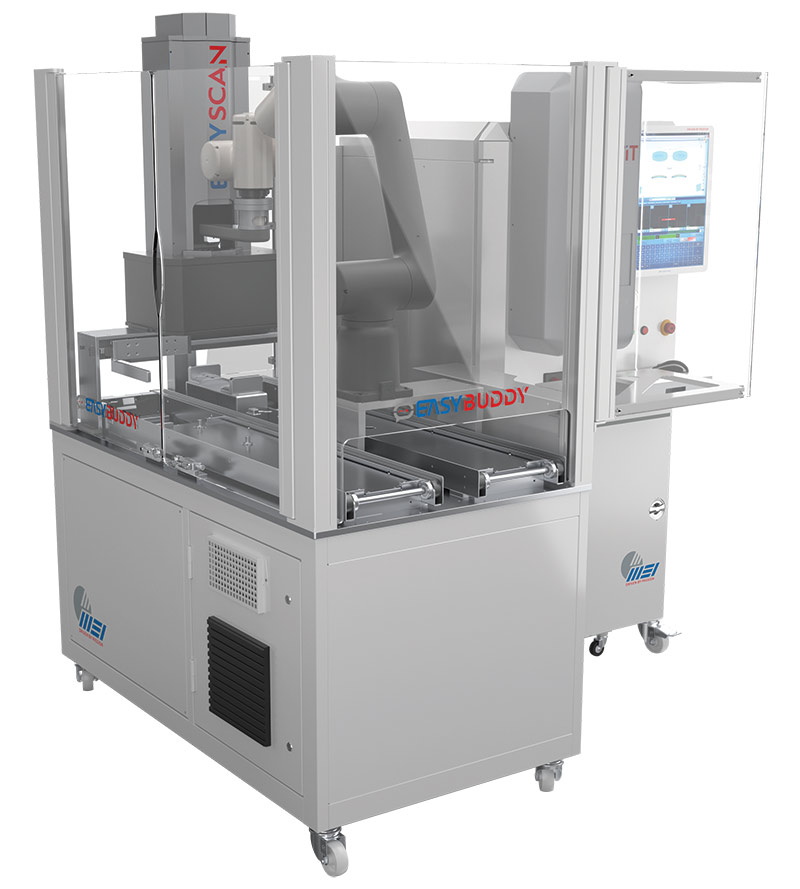
Less manual intervention is the key to faster production times. MEI has achieved this with Easy Buddy, a productivity enhancer that allows lab teams to concentrate on things more important than feeding the lens edging machine. Easy Buddy consists of an automated system that with its integrated cobot, feeds the EasyFit Trend edger with more independence from manual interventions, enhancing productivity. Easy Buddy can manage up to five trays at the entrance and five at the exit. Users also have the opportunity to add an automatic stacker-destacker system or to connect to external conveyors to further increase the autonomy of production.

DAC Technologies continues to offer innovative options for eyecare professionals to provide more services in-house. The tabletop QM-X4 processes lenses with complex shapes, milling and drilling, and shelving. It is easy to operate and is supported by National Optronics’ engineering and service teams. Add the 7ex for 3D edging and finishing, paired with drilling and grooving in one process. This unit is designed to provide flexibility to process all bevel types, including 18 mm B measurements.
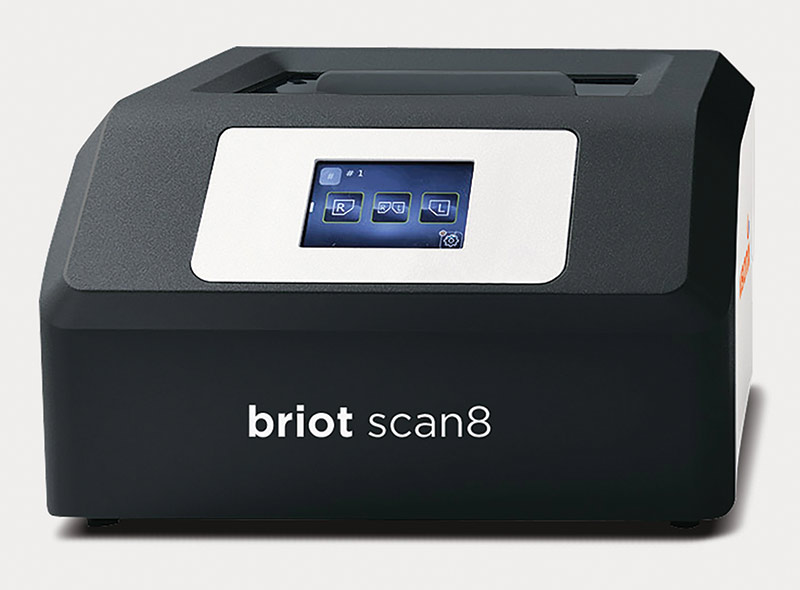
Higher prescriptions can make it challenging to get an accurate lens trace. The Briot Scan 8 Tracer from Visionix featuring TrueScan technology traces even the toughest high-base curve wrap frames without distorting thin metal frames. The intuitive touchscreen interface makes it easy to navigate and operate. Getting the best image of the eye is critical to an accurate diagnosis. The VX610 is the next-generation fundus camera from Visionix. Robotic movements and advanced imaging technology quickly capture retinal images. An innovative design based on cross-polarized light allows for a small footprint with excellent fidelity. VX 610 features auto alignment, autofocus and auto-capture, making it easy to use and train staff to deliver consistently accurate photos. High-quality images with a 45-degree view provide detailed screening for easy diagnosis. A 90-degree view is available using a mosaic function.
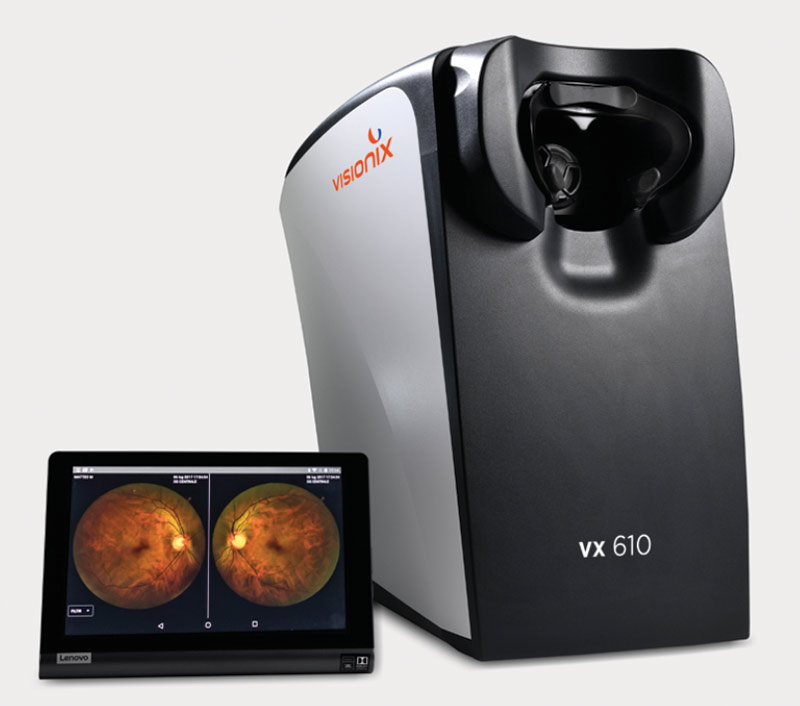
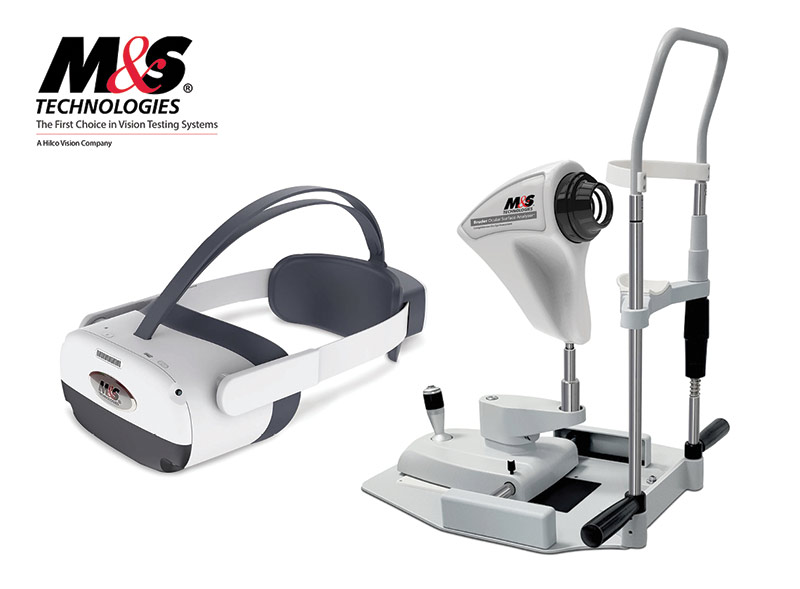
Increased digital device usage and an aging population have spurred an increase in cases of dry eye. M&S Technologies Bruder Ocular Surface Analyzer (BOSA) is a new tool for both established and new dry eye clinics. The comprehensive dry eye assessment device offers fast capture ability and serves as a ready-made hub for identifying, quantifying and treating OSD. It can help enhance clinic efficiency and patient engagement. Meanwhile, the M&S Smart System VR Headset delivers reliable visual field-testing results using the most sensitive fixation monitoring technology, M&S SMARTracker. This lightweight device has an intuitive interface that ensures easy and comfortable use. Complete test results are provided in under 3 minutes per eye, and it operates without an internet connection.

The next generation “Power-Lab” DTS-A Modulo ONE from Schneider merges deblocking and tape stripping in a single machine for industrial-level yield. The combo is powered by Insomec and features two deblocking and two tape-stripping stations. It follows a unique concept for a streamlined process flow, running several stages simultaneously. As a result, the combo easily takes on four individual machines. The DTS-A Modulo ONE relies on proven technology components known for the highest process stability. Merging two in ONE also results in a significant footprint reduction, while facilitating synergies and offering cost savings in structure, automation and periphery.
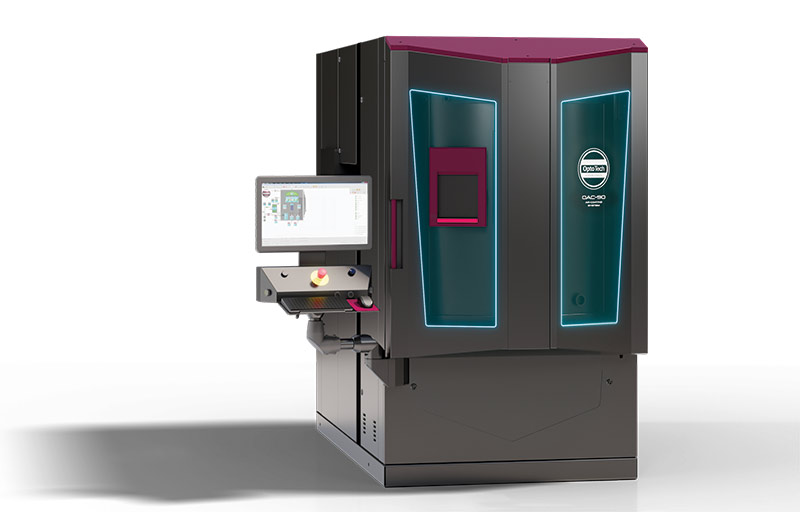
OptoTech recently introduced its new OAC-90 AR-coating system. The new OAC-90 offers a brand-new ergonomic design with a reconfigured machine layout. Valuable features include a significant reduction in cycle time, 55 percent faster than previous versions, lowering the cost per lens due to optimized and energy-saving pumping and cooling systems. The new versatile dome configuration leads to a maximum load capacity of up to 117 lenses, up 20 percent from previous units. The new OAC-90 is a versatile solution for fast and high-quality anti-reflective, clean coatings and in-chamber tinting.
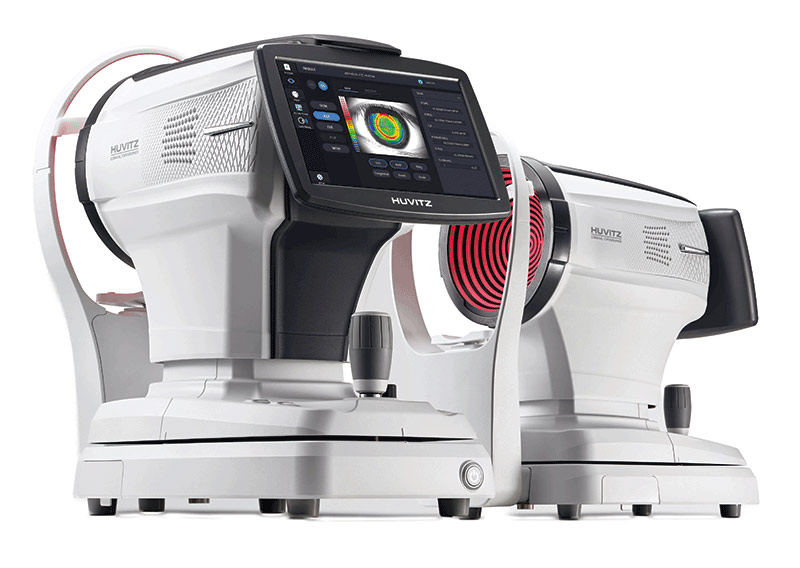
Coburn Technologies continues its 60-year tradition of offering innovative lens manufacturing technology with the release of the Huvitz HTG-1 Full Corneal Topography System. The unit offers specialized comprehensive corneal topography analysis, with reliable and precise corneal information. This high-accuracy corneal data supports diagnosis and monitoring of various corneal conditions, refractive power variations, irregular astigmatism and keratoconus. HTG-1 measures curvature, pupil and corneal aberration data, which are then presented in various maps and graphs. These results are dependable in assessing refractive status and guiding cataract surgery. Producing lenses to address significant vision health issues requires advanced production techniques. The Nexus Digital Surfacing System leverages technology from the acclaimed Cobalt Digital Lab to produce high-quality digital Rx lenses. This high-performance system includes the NEXUS DGT Digital Lens Generator and the NEXUS DP Digital Lens Polisher. Each system represents a significant improvement over its predecessor. Nexus has a 50 percent productivity improvement and new features such as a larger cutter for faster material removal, a larger user interface, and a new fast tool servo axis consisting of a proprietary voice coil and air bearing design. This unit is compact, performs cold mist dry-cutting technology and automatic calibration, and is easy to maintain.
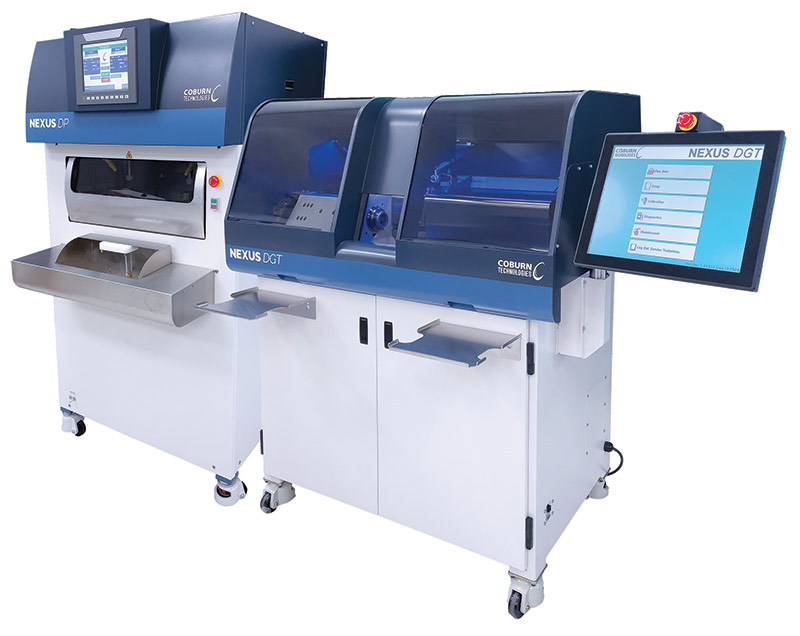
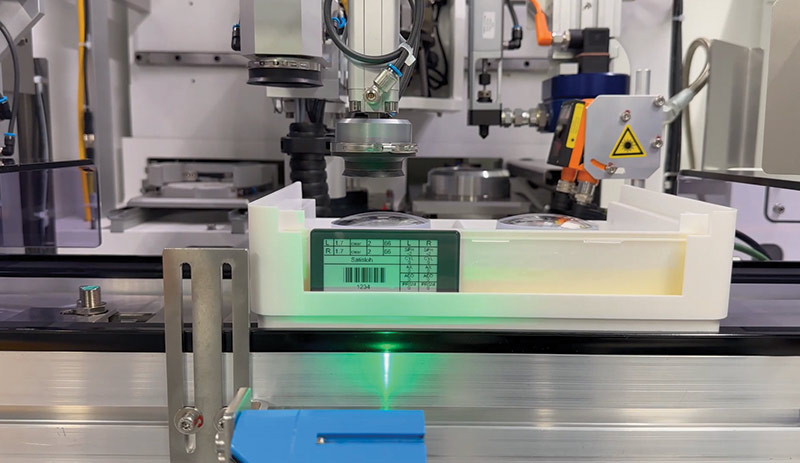
Organization is key to reducing errors on the lab production floor. The E-Ticket System from Satisloh is a paperless digital solution that converts traditional printed job tickets into a reusable and dynamic format so labs can update job information on the fly while retaining all the advantages of visual data. The easy-to-use E-Ticket Manager software platform communicates with LMS, ERP, POS and MES-360 for real-time updates, workflow definitions, flagging hot jobs and searching specific jobs. Going paperless with the E-Ticket System improves lab efficiencies by eliminating the inconveniences associated with paper job tickets.

Many in the industry would describe A&R equipment as a reference in the ophthalmic market. The A&R NeoMapper is a fully automatic mapping solution offering freeform surface evaluation using A&R Error Map technology, ensuring no surface defects are shipped to the customers. Surface quality features such as the GMC (Global Mapping Criteria) are evaluated to provide total lens quality assessments and cosmetic control in partnership with IOT. These inspection data are crucial for process control applications enabling real-time production tracking, process performance, machine status and quality assurance dashboards.

Even the smallest tools help ensure quality and accuracy during lens manufacturing. The Lens Shark from Dynamic Labs makes removing and inserting stubborn lenses quick and easy. The ergonomic design is comfortable and easy to use. The Lens Shark relieves the stress on your thumbs, which can lead to carpal tunnel syndrome. Made from high-quality materials, Lens Shark is durable and designed to last for thousands of uses. ■



